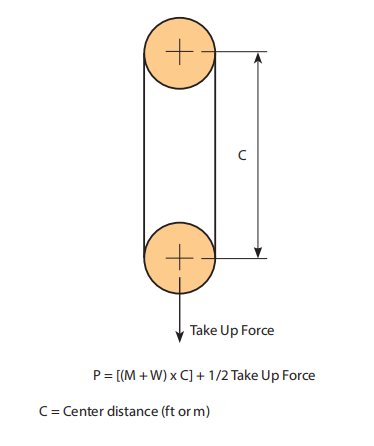Introduction
A mindful evaluation from the problems surrounding a conveyor is necessary for accurate conveyor chain variety. This part discusses the basic concerns demanded for profitable conveyor chain assortment. Roller Chains tend to be applied for light to moderate duty materials dealing with applications. Environmental ailments could call for the usage of exclusive products, platings coatings, lubricants or even the ability to operate without having more external lubrication.
Primary Information and facts Required For Chain Choice
? Type of chain conveyor (unit or bulk) which includes the process of conveyance (attachments, buckets, as a result of rods and so on).
? Conveyor layout which include sprocket locations, inclines (if any) and also the number of chain strands (N) for being utilised.
? Amount of materials (M in lbs/ft or kN/m) and form of materials to become conveyed.
? Estimated excess weight of conveyor elements (W in lbs/ft or kN/m) together with chain, slats or attachments (if any).
? Linear chain pace (S in ft/min or m/min).
? Environment by which the chain will operate which include temperature, corrosion circumstance, lubrication issue and so on.
Stage one: Estimate Chain Tension
Use the formula below to estimate the conveyor Pull (Pest) after which the chain tension (Check). Pest = (M + W) x f x SF and
Check = Pest / N
f = Coefficient of Friction
SF = Pace Issue
Phase two: Create a Tentative Chain Choice
Making use of the Check value, make a tentative assortment by selecting a chain
whose rated doing work load greater compared to the calculated Check worth.These values are acceptable for conveyor services and therefore are diff erent from people shown in tables with the front of the catalog which are related to slow pace drive chain utilization.
Also to suffi cient  load carrying capacity often these chains has to be of the specific pitch to accommodate a sought after attachment spacing. For instance if slats are to get bolted to an attachment every 1.five inches, the pitch in the chain picked will have to divide into one.5?¡À. So one particular could use a forty chain (1/2?¡À pitch) with all the attachments every single 3rd, a 60 chain (3/4?¡À pitch) using the attachments every single 2nd, a 120 chain (1-1/2?¡À pitch) using the attachments just about every pitch or maybe a C2060H chain (1-1/2?¡À pitch) together with the attachments every single pitch.
load carrying capacity often these chains has to be of the specific pitch to accommodate a sought after attachment spacing. For instance if slats are to get bolted to an attachment every 1.five inches, the pitch in the chain picked will have to divide into one.5?¡À. So one particular could use a forty chain (1/2?¡À pitch) with all the attachments every single 3rd, a 60 chain (3/4?¡À pitch) using the attachments every single 2nd, a 120 chain (1-1/2?¡À pitch) using the attachments just about every pitch or maybe a C2060H chain (1-1/2?¡À pitch) together with the attachments every single pitch.
Step three: Finalize Choice – Calculate Actual Conveyor Pull
Immediately after making a tentative assortment we have to verify it by calculating
the actual chain stress (T). To carry out this we ought to fi rst calculate the real conveyor pull (P). In the layouts proven over the appropriate side of this webpage decide on the acceptable formula and calculate the complete conveyor pull. Note that some conveyors may very well be a blend of horizontal, inclined and vertical . . . in that case calculate the conveyor Pull at each and every part and add them with each other.
Stage four: Determine Maximum Chain Tension
The maximum Chain Stress (T) equals the Conveyor Pull (P) as calculated in Phase three divided by the variety of strands carrying the load (N), instances the Pace Issue (SF) proven in Table 2, the Multi-Strand Factor (MSF) shown in Table 3 and also the Temperature Aspect (TF) proven in Table four.
T = (P / N) x MSF x SF x TF
Phase five: Test the ?¡ãRated Doing work Load?¡À of the Selected Chain
The ?¡ãRated Working Load?¡À of the chosen chain should really be better than the Maximum Chain Tension (T) calculated in Stage 4 above. These values are proper for conveyor services and are diff erent from these shown in tables with the front from the catalog that are linked to slow speed drive chain utilization.
Step six: Check the ?¡ãAllowable Roller Load?¡À on the Selected Chain
For chains that roll around the chain rollers or on top roller attachments it really is required to test the Allowable Roller Load?¡À.
Note: the Roller load is determined by:
Roller Load = Wr / Nr
Wr = The complete bodyweight carried from the rollers
Nr = The quantity of rollers supporting the weight.